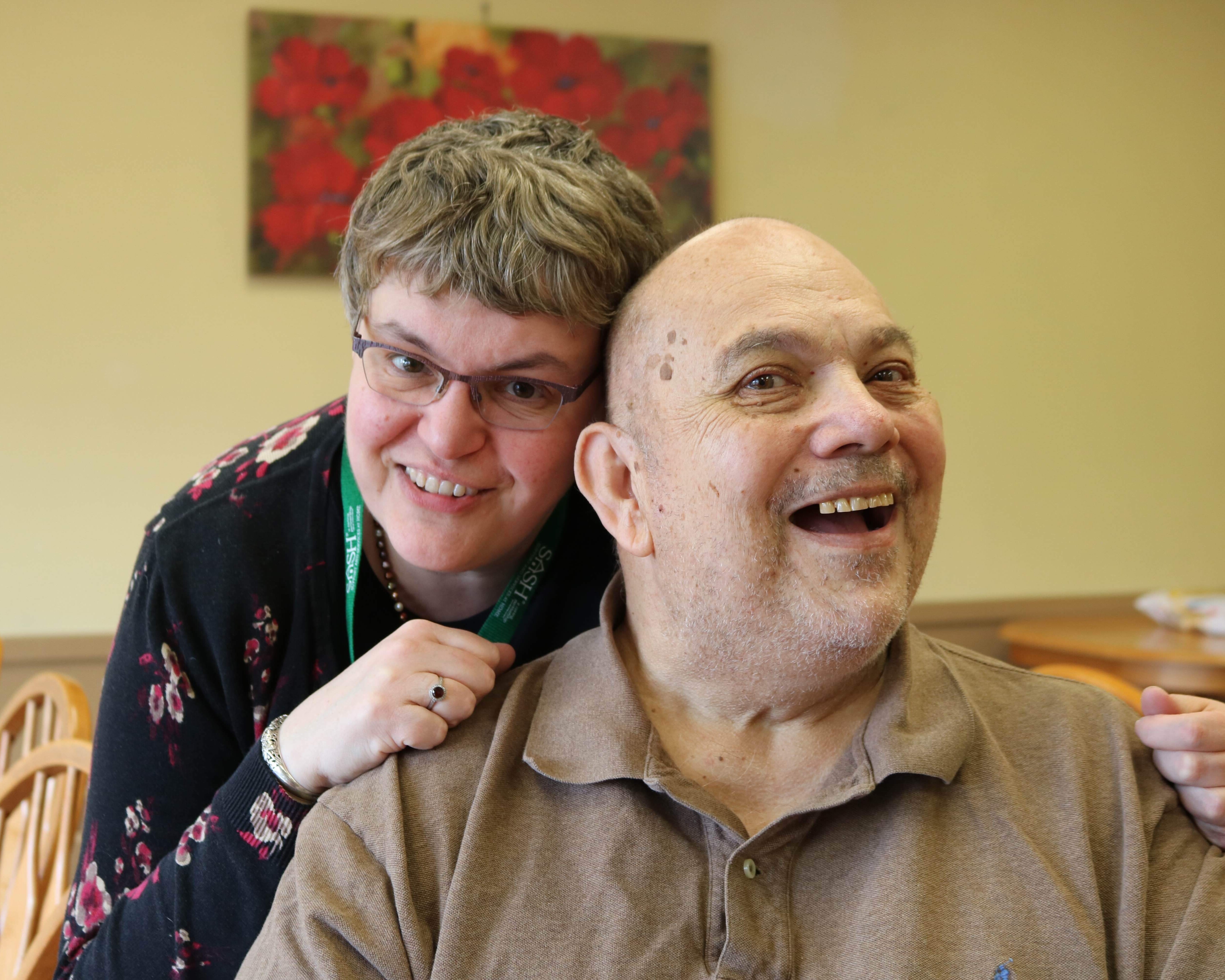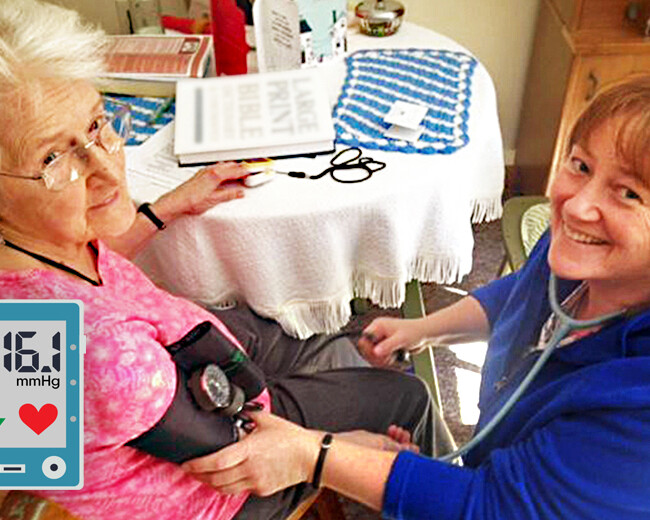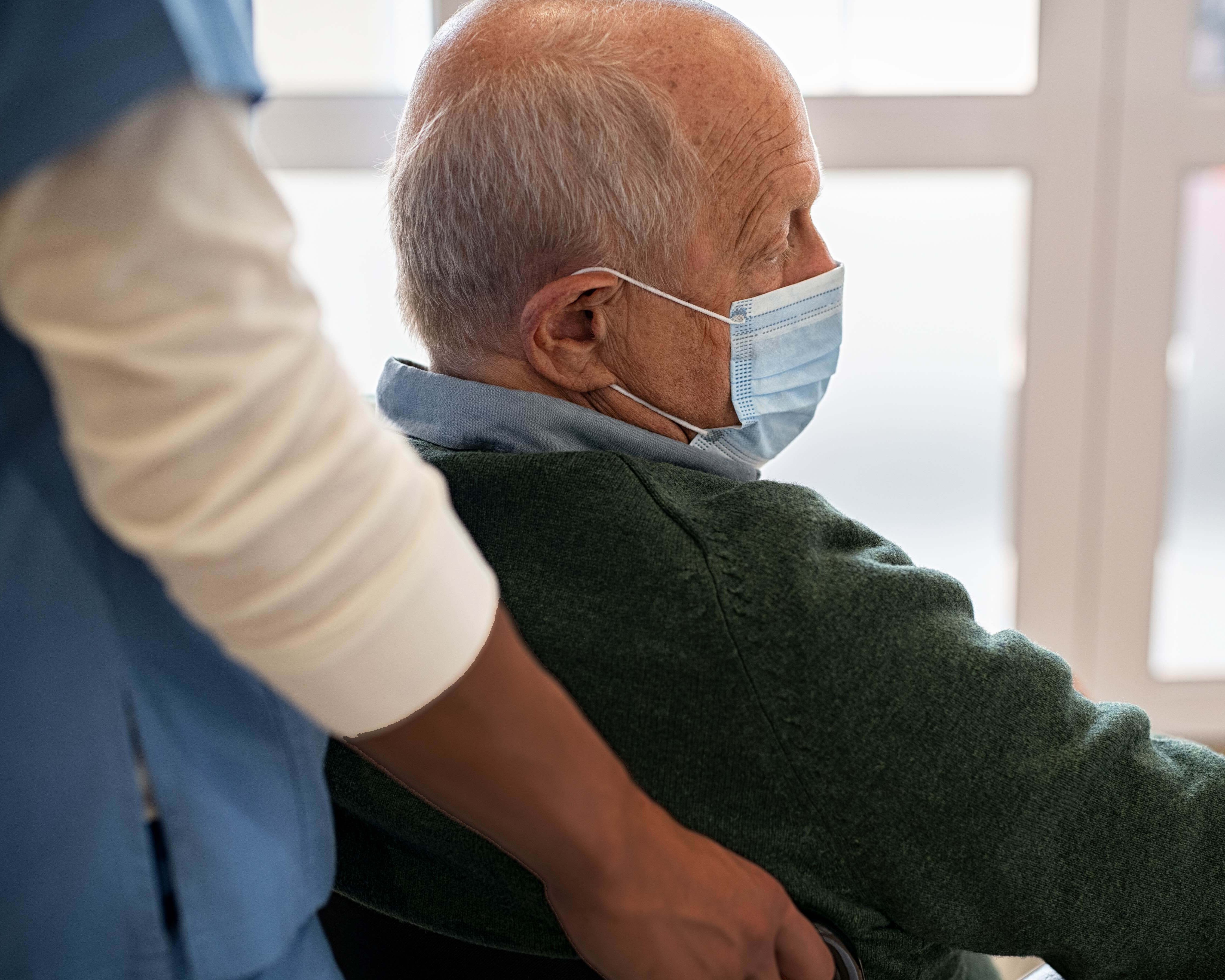
Our Results
SASH programs are making headlines. Our programs are designed to help older adults live in their homes as long as possible, and the data shows that we're succeeding in many areas.
The SASH model has been shown to improve both physical and mental health, and it also reduces hospitalizations and emergency room visits. We're very proud of the difference our programs are making, and we'll continue to work hard to ensure older adults can age in place safely and comfortably.
Read our success stories!
Data Suggest that SASH Participation Reduces the Frequency of ER Visits
Succeeding with Diabetes Management & Prevention
SASH Shown to Succeed in Reducing High Blood Pressure
SASH Found to Save Medicare Costs for Emergency Room and Specialist Visits
Federal Study Ties SASH to Medicaid Savings for Long-Term Care
Data Suggest that SASH Participation Reduces the Frequency of ER Visits

SASH participants with a history of frequent hospital emergency room (ER) visits showed an average drop of three visits per person from 2018 to 2019. According to a 2021 analysis of statewide SASH data, this resulted in significant savings in healthcare costs.
The analysis looked at data on ER admissions for Vermont SASH participants who were active in both 2018 and 2019 and had “high emergency room utilization,” defined as four or more visits per year in 2018.
325 participants met the criteria. They accounted for 2,221 ER visits in 2018 and 1,320 visits — 901 fewer — in 2019, or a median decline of three visits per person.
At an average cost of $843 per basic, mid-level ER visit in 2019, the resulting savings in health care costs would be $759,543 (see chart below). This is a highly conservative estimate because it excludes tests, procedures, and other charges, such as ambulance transportation. (A study by the National Center for Health Statistics, published in June 2020, found that 23% to 53% of adults 60 and older arrive at the ER by ambulance.)
It's worth noting that data from January 2019 through December 2020 showed the same median decline of three ER visits per person. However, this result was excluded from the analysis due to the potential impact of the COVID-19 pandemic on the numbers.
The moral of this story: Because SASH coordinators and wellness nurses form close relationships with participants, they are attuned to their participants’ health needs and concerns, so when something goes awry, they can then step in to avert a health crisis — and potentially a costly trip to the emergency room.
Succeeding with Diabetes Management & Prevention

With funds from the Vermont Department of Health, SASH launched a Diabetes Self-Management Initiative in January 2019. At that time, SASH recruited 40 participants with diabetes and paired each with a wellness nurse, who arranged for regular blood-sugar readings and provided health monitoring and coaching.
At the end of six months, 48% of those who completed the program had lower A1c (blood sugar) levels, and all participants had an overall net decrease in A1c. In addition, SASH referrals to diabetes self-management and diabetes prevention classes increased by 800% and 350%, respectively.
SASH screens participants for diabetes as part of their initial and annual assessments. Among those without a diabetes/prediabetes diagnosis who have been screened to date, 29% have been found to be at risk for prediabetes.
Ongoing Strategies
- SASH collaborates with primary-care practices to ensure participants are regularly tested for A1c levels, with the results reported back to SASH.
- Prioritized in this effort are participants with A1c levels of 8 and higher.
- SASH continues to stress diabetes management and prevention during monthly all-SASH training calls and, for consistency, reinforces the use of a SASH-created template for communicating with providers about diabetes care for SASH participants.
Diabetes Self-Management Success
- A Bennington SASH coordinator worked with a female participant with prediabetes and a history of cardiovascular disease. The nurse educated the participant about the potential complications of diabetes and the benefits of a healthy diet, exercise, and losing weight. The woman also started taking medication prescribed by her doctor. Six months later, her A1c was 5.9%, down from 6.7%.
- A Windham County SASH participant embraced SASH’s help in making lifestyle changes and managing his diabetes. He started exercising more, choosing healthier foods, and attending a weekly diabetes-prevention class. The class has helped him better understand the strategies SASH was advising. His A1c level is now 5.7%.
SASH Shown to Succeed in Reducing High Blood Pressure

Blood pressure increases as we age. In the U.S., adults over 40 can expect their systolic blood pressure to increase about 7 mmHg per decade. More than 75% of those over age 70 will have dangerously high blood pressure, known as Stage 1 or Stage 2 hypertension.
SASH works to turn these statistics on their head. Staff provide regular blood pressure clinics along with one-on-one and group education about hypertension prevention and management. They also communicate with primary-care physicians to ensure that participants' medications and related interventions are on track and up to date.
And it's working. A January 2021 analysis of SASH data found:
- Of the 3,610 Vermont SASH participants with a documented Stage 2 blood pressure reading anytime in their history, their first Stage 2 reading averaged 148.8 mmHg systolic. Today, the average reading for this same group is 132.7 mmHg systolic — a reduction in blood pressure of 16.1 mmHg systolic.
- The Vermont SASH database shows an average of 10 documented blood pressure readings per participant. By comparison, those with a Stage 2 reading at any time in their medical record have more than 14 blood pressure readings in their record. This illustrates that SASH more closely monitors and intervenes with those who have Stage 2 hypertension.
- There were 2,064 Vermont SASH participants whose first documented blood pressure reading was in the Stage 1 range of hypertension. As of January 2021, the same group had realized an average 5.23 mmHg reduction in their systolic blood pressure reading.
Resources: - SASH Supports Blood Pressure Management (2023)
- Undiagnosed Hypertension: SASH Finds Hypertension Hiding in Plain Sight (2023)
SASH Found to Save Medicare Costs for Emergency Room and Specialist Visits

The national research journal Cityscape published an article in 2018 that reported Vermont’s SASH program is slowing the growth of Medicare expenditures for emergency-room and specialist visits among older adults and people with disabilities.
Most SASH participants live in congregate affordable housing. They’re supported by a statewide network of social-service agencies and healthcare partners, including nonprofit housing organizations, area agencies on aging, community mental health centers, home health agencies, primary and community care teams, and regional hospitals.
Participants receive individualized support at home from a SASH care coordinator and a wellness nurse, who, together with these partners, help up to 5,000 SASH participants throughout Vermont remain independent and living at home.
The authors undertook a deeper analysis of data collected over 5½ years, as detailed in the latest federal evaluation of SASH. They examined data for all 54 Vermont “panels” (groups of approximately 100 SASH participants each) and determined:
- Medicare expenditures for emergency-room visits trended lower for almost all SASH panels in the state compared to the control group. Urban panels (those in Chittenden County) and the longest-running panels (those in place since SASH began in 2011) showed statistically significant reductions in spending for emergency-room visits.
- Similarly, expenditures for specialist visits also trended lower — and primary-care visits trended higher — for all panels, with statistically significant results among urban and early panels. These results correspond with Vermont’s focused efforts to encourage Vermonters to rely on primary care rather than specialists or emergency departments for their health needs.
- Additionally, this analysis found statistically significant results for slowing the growth of Medicare expenditures for SASH participants who are dually eligible for both Medicare and Medicaid
“We’ve known SASH is saving Medicare costs for many of our participants, but to know we’re having a significant impact on emergency room and specialist costs for a subset of our SASH panels is very exciting,” said former SASH Director Molly Dugan. “It’s also important to note the statistically significant findings are very much tied to sample size because the urban panels account for almost half of the SASH participants in the sample used for the data evaluation,” she added. “With a larger sample size, it’s very possible that all SASH panels would have significant findings.”
About the Study:
The Impact of the Vermont Support and Services at Home Program on Healthcare Expenditures was written by researchers from RTI International, the University of North Carolina at Greensboro and the LeadingAge LTSS Center at UMass Boston. Cityscape is published three times a year by the Office of Policy Development and Research of the U.S. Department of Housing and Urban Development, with the goal of bringing “high-quality original research on housing and community development issues to scholars, government officials, and practitioners.” The complete document can be found online here.
Federal Study Ties SASH to Medicaid Savings for Long-Term Care

The latest federal evaluation of Vermont's SASH program, released July 12, 2019, shows significantly slower growth in the cost of long-term institutional care for very low-income SASH participants living in most areas of the state compared to non-participants.
The finding holds true for SASH participants age 65 and older who receive Medicaid to cover the cost of long-term care in nursing homes. Researchers found Medicaid costs were about $400 lower per beneficiary per year among participants living at affordable-housing sites where SASH is based.
Vermont has a strong record of preventing and delaying nursing home care. For more than a decade, home health agencies, and area agencies on aging and adult day centers have helped hundreds of Vermonters stay living at home through a Medicaid–funded program called Choices for Care. This study shows that even in a state with a strong commitment to the independence of older Vermonters, SASH makes a difference.
"This is a significant finding because it shows SASH delays or prevents nursing-home placement," said Amy Kandilov, the study's lead investigator. "It's also one of the few programs we’ve evaluated having a favorable impact on both Medicare and Medicaid expenditures for the population served."
Previous evaluations of SASH have documented savings in Medicare expenses for SASH participants, but this is the first time researchers have honed in on SASH as it relates to Medicaid costs. The study was conducted for the U.S. Department of Health & Human Services by RTI International and the LeadingAge Center for Applied Research.
Most SASH participants live in congregate affordable housing. They are supported by a statewide network of social-service agencies and health-care partners, including nonprofit housing organizations, area agencies on aging, community mental health centers, home health agencies, primary and community care teams, and regional hospitals. Participants receive individualized support at home from a SASH care coordinator and a wellness nurse. Together with these partners, they help about 5,000 SASH participants live safely at home and avoid costly medical interventions. The program is free to participants, with funding provided by OneCare Vermont and the state of Vermont.
The authors of the study, SASH Evaluation Findings, 2010-2016, analyzed Medicare and Medicaid claims from 2011 to 2016 and surveyed participants and stakeholders to evaluate the impact exclusively of SASH on health status and well-being. They examined data for 54 Vermont panels (groups of approximately 100 SASH participants each) and 116 affordable-housing communities that hosted SASH at the time.
Researchers also confirmed that Medicare costs continue to be lower for SASH participants, especially those in urban areas ($1,450 less per beneficiary per year). The positive impact of SASH on total Medicare expenditures was driven by "statistically significant slower growth in Medicare expenditures for hospital stays, emergency room visits, and specialist physicians, which is consistent with the SASH program goal of preventing unnecessary high-cost care," Kandilov explained."
The study also affirmed earlier findings that SASH participants report greater ease in managing their medications. And at housing sites where SASH is based, property managers credit SASH for diffusing tenant disputes and helping residents avoid eviction due to mental health and other challenges.
Robyn Stone, DrPH, senior vice president for research at LeadingAge LTSS Center, emphasized the new study's significance. "These findings should be of particular interest to policymakers at the federal and state levels as well as managed-care plans and other health systems that are responsible for the care of low-income older adults." She added, "Partnering with affordable senior-housing providers makes sense for payers, providers and consumers, both from a quality and a cost perspective."
Read highlights and the complete study, SASH Evaluation Findings, 2010-2016.

SASH® is a registered trademark of the nonprofit Cathedral Square Corporation. Partner organizations include member affiliates of Vermont Care Partners, VNAs of Vermont, nonprofit housing organizations, primary and community health care teams, and local and regional hospitals.